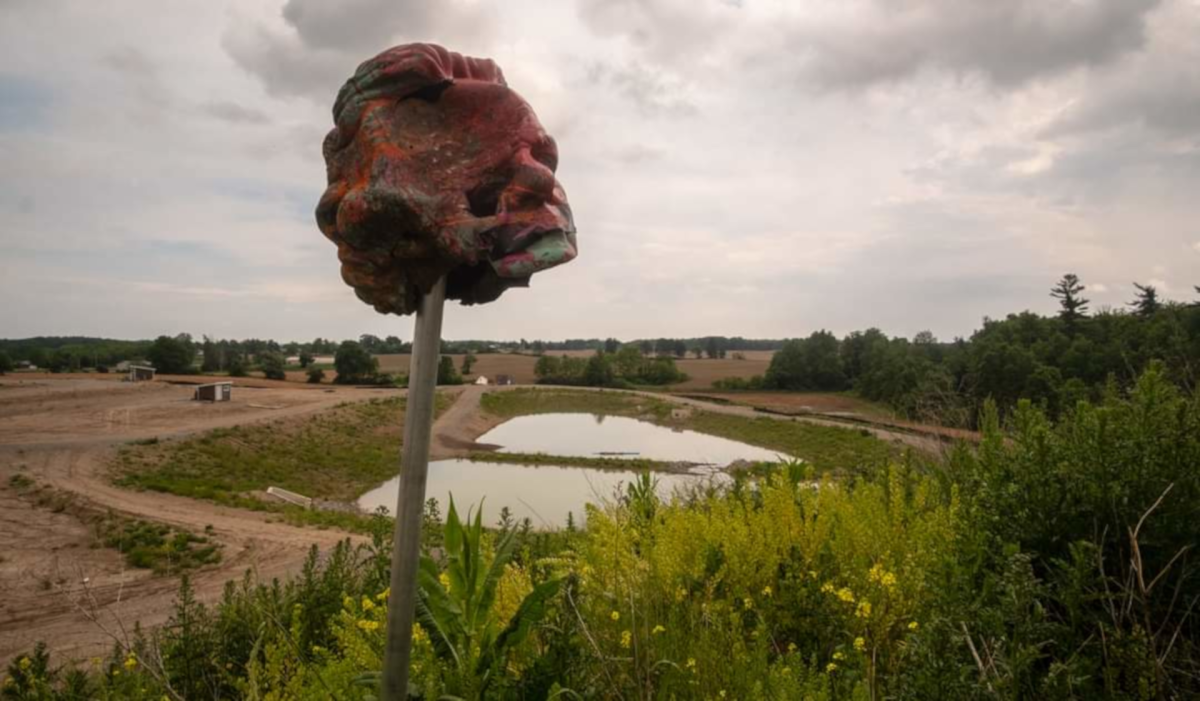The head from the statue of Egerton Ryerson that was pulled down by demonstrators Sunday at the university bearing his name in Toronto has turned up at 1492 Land Back Lane in Caledonia.

The piece showed up mounted to a pike at the site on Monday where a group from Six Nations have been laying claim to land amid a protest in Haldimand County.
A Twitter post from the group is now welcoming the “heads” of other alleged colonizer monuments.
Execs at Ryerson University have said the monument will not be “restored or replaced,” in a statement on Sunday.
President Mohamed Lachemi revealed the statue was pulled down by a truck about an hour after demonstrations honouring residential school victims ended at 6 p.m.

Get daily National news
The statue and the university’s name have been the subject of criticism for several years amid calls for Canada to reconcile its history of colonialism and treatment of Indigenous people.
The monument was spray-painted with words and had paint splashed across the statue over the last week following the discovery of the bodies of 215 children in a former residential school in Kamloops, B.C.
Skyler Williams, the spokesperson for Land Back Lane protestors, was even seen with the head in his own Facebook post.
“Mr. Ryerson is feeling a little lonely here at Landback Lane. He needs a friend. I wonder if Sir John A McDonald will come for a visit,” Williams said in a Facebook post.
The Caledonia site, located near the Highway 6 bypass, has been the site of an occupation of the McKenzie Meadows housing development which has been renamed “1492 Land Back Lane” by a group that calls itself “land defenders.”
The occupiers claim the project is on unseeded territory that belongs to the Haudenosaunee.
The land defenders have been on the site since mid-July and claim the tract of land was “promised” to Six Nations in 1784 but “unlawfully” sold to a developer by the Canadian government in 1853.
The developer of the site, Foxgate Developments Inc., was planning to sell close to 200 homes on the stretch of land at Mackenzie Meadows.
In early August 2020, Ontario Provincial Police (OPP) began arresting demonstrators on the site after a judge issued a pair of injunctions — one that prohibits people from trespassing on the construction site and another that prohibits blockades from being set up on roads in Haldimand County.
To date, police have charged over 50 individuals connected with the occupation with many offences ranging from disobeying a court order to mischief to assaulting peace officers.














Comments